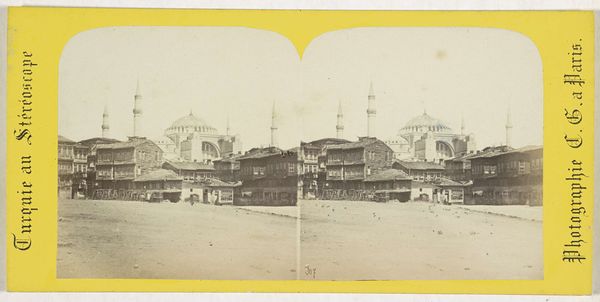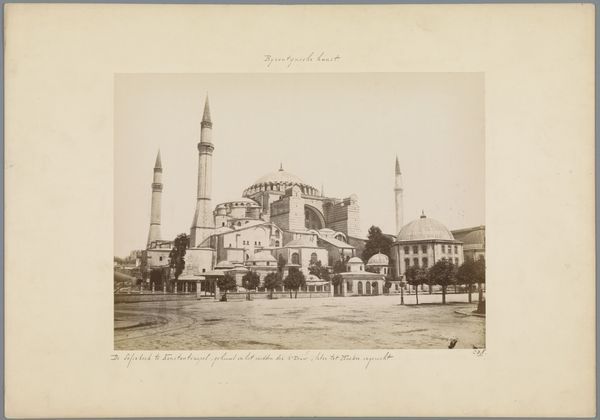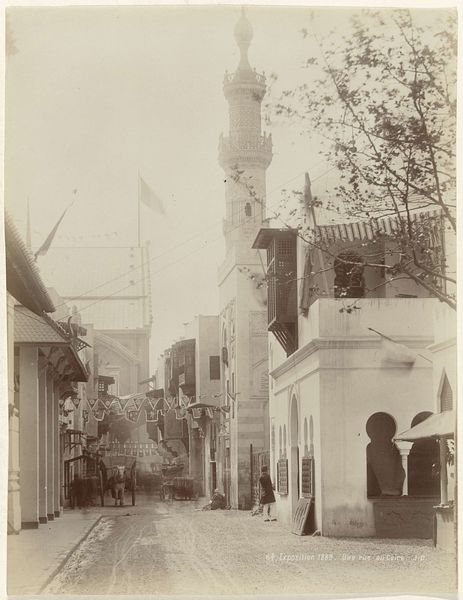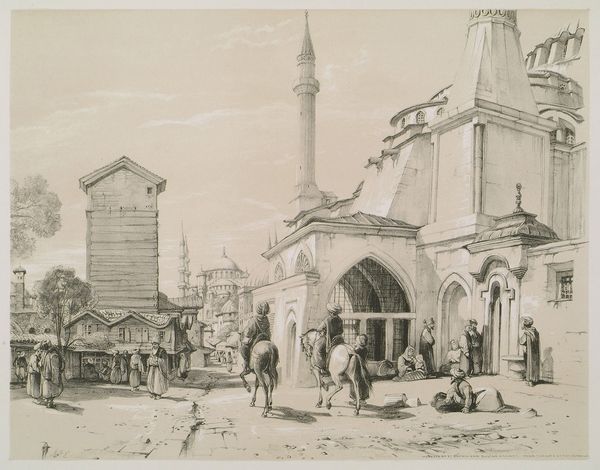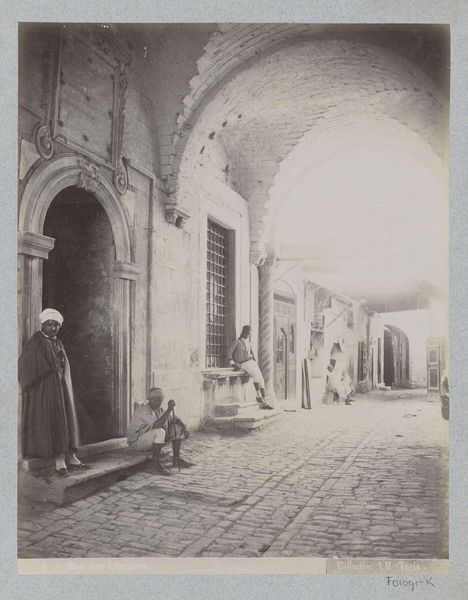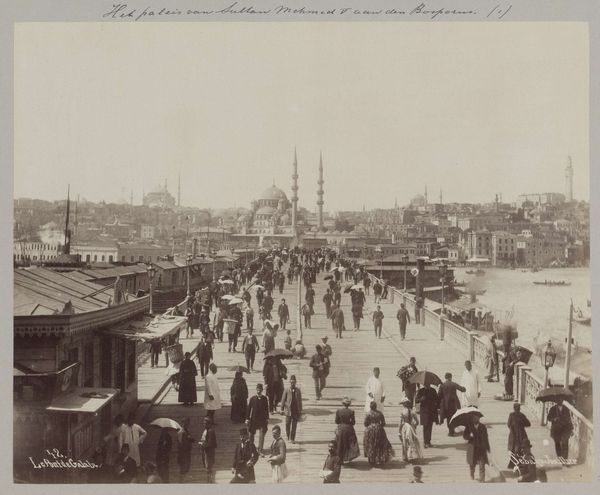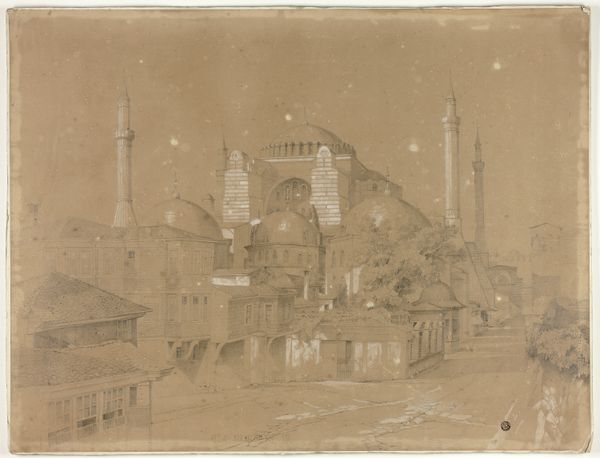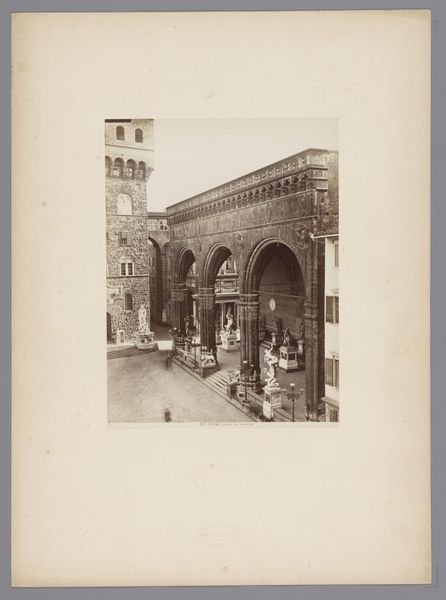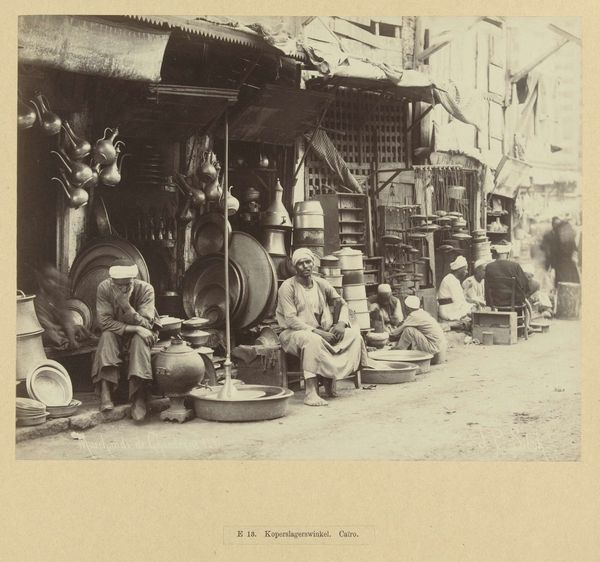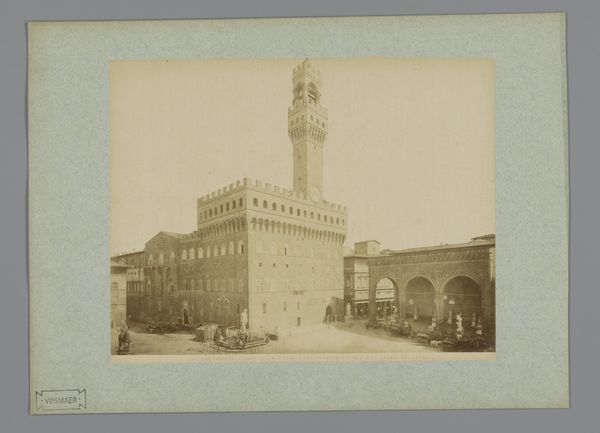
photography, gelatin-silver-print
#
street-photography
#
photography
#
orientalism
#
gelatin-silver-print
#
19th century
#
cityscape
#
islamic-art
Dimensions: height 270 mm, width 211 mm
Copyright: Rijks Museum: Open Domain
Curator: This gelatin silver print, taken between 1880 and 1890, captures a street scene in Smyrna—now Izmir—featuring a man with a dromedary in the foreground. The photographer is noted as Rubellin. Editor: My first impression is that it's surprisingly still and serene for a bustling marketplace. The tones are muted, giving it a sepia wash of nostalgia and quiet. Curator: Right, this photograph provides insight into the visual culture and the Western fascination with the "Orient" during that period, what we call Orientalism. The composition and subject matter were carefully selected and presented to evoke certain feelings. Editor: I find myself drawn to the texture. Look at the layers—the rough hide of the dromedary, the cobblestones, the peeling facades of the buildings. It emphasizes a labor intensive commerce, and these durable things denote that the people are doing the everyday. The physical materials almost speak louder than the cultural symbols here. Curator: It's interesting that you focus on that! I tend to analyze how the scene represents a staged encounter for Western viewers, how power dynamics played out in image making, and who was involved. But it's equally vital to look at production in photography, what materials were available, how processing techniques evolved, the access for people with means. Editor: That processing feels critical here. This silver gelatin method—its accessibility must have really impacted the development and distribution of such imagery at that time, don’t you think? It changes the kind of artist able to capture things. Curator: Absolutely. The democratization of image making affected public perceptions and, ultimately, socio-political forces shaping Western understanding of Islamic lands. But let's also appreciate the skill involved! Editor: Agreed. Considering this market scene as a record of human action around the trades shows so much about how things and work functioned together! It makes me curious to study the tools used at the time. Curator: Exactly! Considering the scene from a cultural and historic angle while exploring materiality adds layers of context that brings us closer to an understanding about the public role of photography in society and where value lay. Editor: Indeed, analyzing both the making and the viewing allows the scene and subject to speak so vibrantly today, long beyond its initial purpose.
Comments
No comments
Be the first to comment and join the conversation on the ultimate creative platform.
